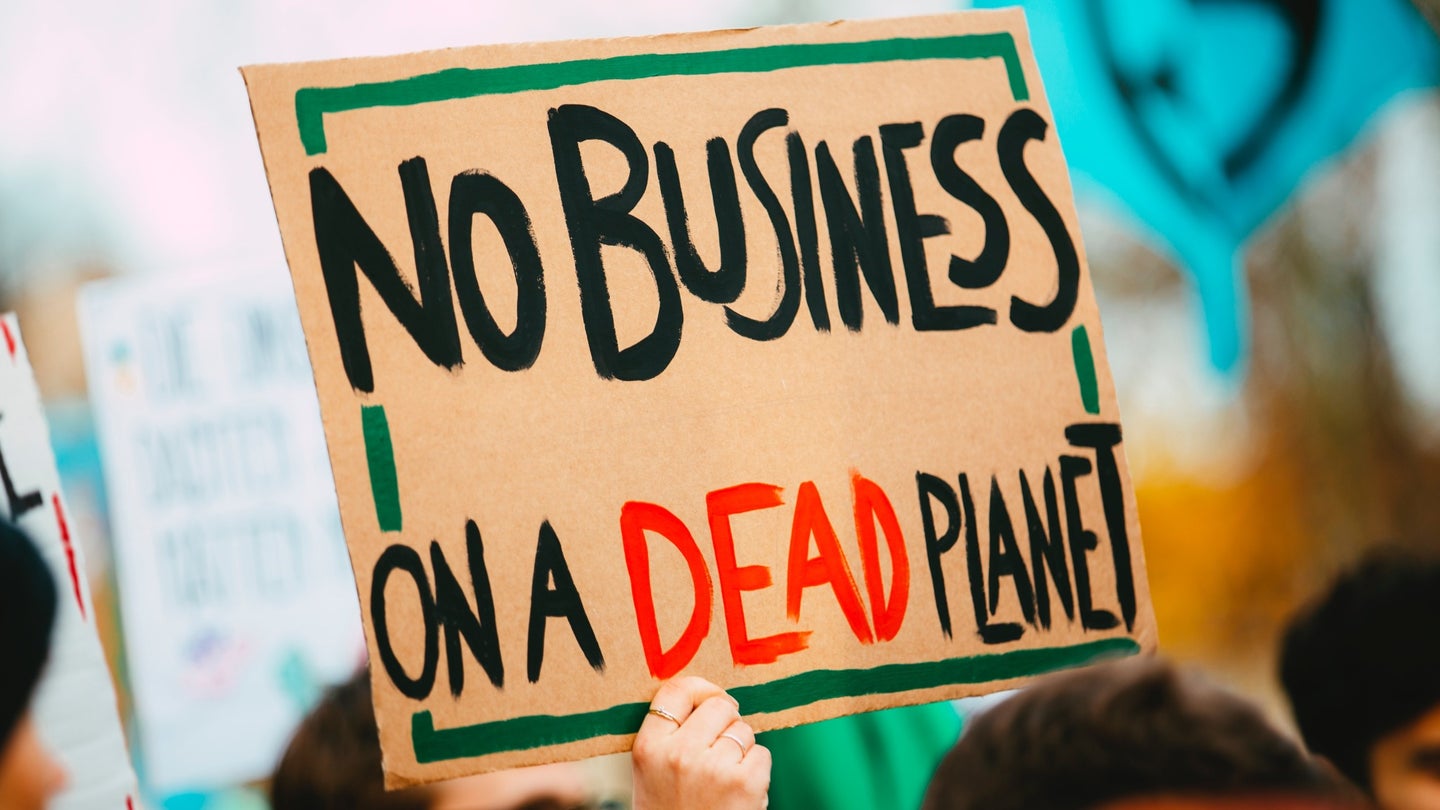How big banks can make real progress against climate change
'The financial sector should be the engine of the transformation.'

The United Nations’ Intergovernmental Panel on Climate Change (IPCC) recently released its Sixth Synthesis Report on climate change (AR6). The report aims to recognize the current status and trends of climate change and identify adaptation and mitigation pathways in the context of sustainable development. It says there’s still time to act on climate change, but urgent action is needed.
Globally, many factors cause implementation gaps in climate change mitigation and adaptation practices. According to the report, insufficient funding and the lack of political frameworks for finance are two major ones.
“The financial sector should be the engine of the transformation to a low-carbon, resilient, and socially inclusive world economy,” says Kevin P. Gallagher, director of the Boston University Global Development Policy Center whose specializations include international environmental policy and economic development. “At present, it is unhinged from those goals, where short-term speculative investment and traditional fossil fuels are seen as less risky than productive, employment-generating investment in clean growth and adaptation.”
[Related: ‘Humanity on thin ice’ says UN, but there is still time to act on climate change.]
Public and private financing for fossil fuels is said to be higher than that for climate adaptation and mitigation. Fossil energy subsidies reached $732 billion in 2021, compared to $543 billion in 2015. Insufficient finances can hamper the adoption of low-emission technologies. This explains in part why the adoption of low-emission technologies like electric vehicles and lithium-ion batteries lags in most developing countries.
At the 16th Conference of Parties (COP16) of the UNFCCC in 2010, developed countries made a goal of mobilizing $100 billion for climate action in developing countries by 2020. Although the climate finance mobilized by developing countries has increased from $52.4 billion in 2013 to $83.3 billion in 2020, it was still below the collective goal.
According to the IPCC report, accelerated financial support from developed countries and other sources is a “critical enabler” to enhancing mitigation and adaptation action. Otherwise, the poorest and most vulnerable populations will remain disproportionately affected by the losses and damages from climate change.
To help accelerate financial support for developing countries, Gallagher says developed countries can increase the capital of the Multilateral Development Banks (MDBs) like the World Bank or the Asian Development Bank. Wealthy countries could direct capital into “sectors and sources of economic activity that serve a public purpose until we can reform the financial system commensurately,” which is already on the table this year, he adds.
Currently, the US and Germany are pushing for a fundamental reform of the World Bank to tackle climate change more appropriately. Gallagher says this can’t be done without an increase in the capital of the World Bank. German Development Minister Svenja Schulze, along with the US and other shareholders, proposed some changes to the World Bank’s current model to make it more appealing for developing countries to use its loans for climate action and biodiversity conservation. This includes climate lending on better terms and providing targeted budget support for governments pursuing climate-neutral policy reforms.
“Given that the fossil fuel sector will be a ‘stranded asset’ as the financial sector is reformed toward these broader goals,” says Gallagher, “the fossil fuel industry and the politicians in states that represent them are pushing back mightily on financial sector reform, especially in the United States.”
Investment in companies with responsible environmental, social, and governance (ESG) practices in place may be an effective tool to address climate change, especially if it includes policies that reduce a company’s greenhouse gas (GHG) emissions. However, corporate investments focused on ESG policies in the US are facing backlash. Last December, Florida’s chief financial officer announced that the state treasury will divest about $2 billion from multi-national investment company BlackRock Inc., arguing that “they’ve got other goals than producing returns” because of their ESG investing practices.
[Related: How banks are using technology to fight climate change.]
Climate change itself affects economic growth and the availability of financial resources. For example, more frequent and severe disasters and the risk of abrupt value losses in climate risk-sensitive geographical areas may impair financial stability.
“Here in the US, we have to look no further than the increased incidences of forest fires, droughts, flooding, and tropical storms,” says Gallagher. “These wipe out the capital stock in terms of businesses and houses, hurt agricultural productivity, and end up putting folks out of work. When the financial sector is exposed to those assets and households through lending and investment, they take collateral damage too.”
Redirecting capital toward climate action within the national and global financial sectors must occur on a major scale to secure a liveable future. As United Nations Secretary-General Antonio Guterres has said, the climate time bomb is ticking. “Globally, a network of central banks and the International Monetary Fund are starting to move in the right direction,” says Gallagher, “but time is of the essence.”